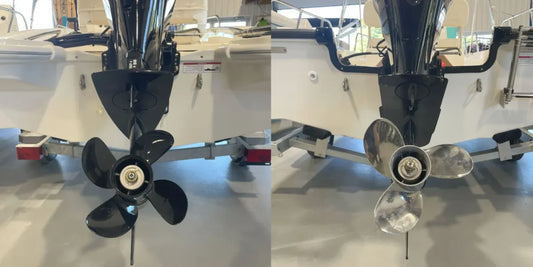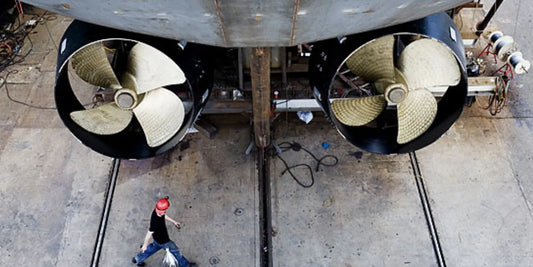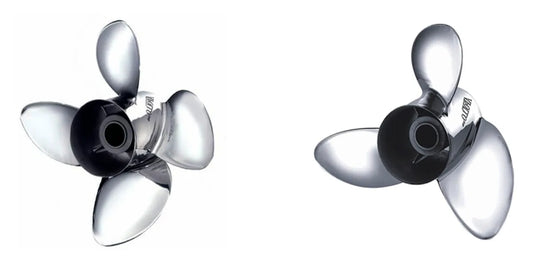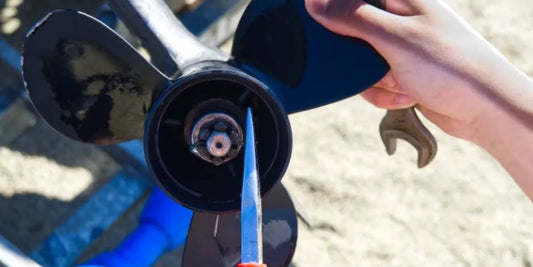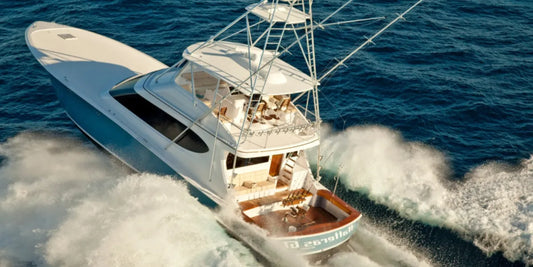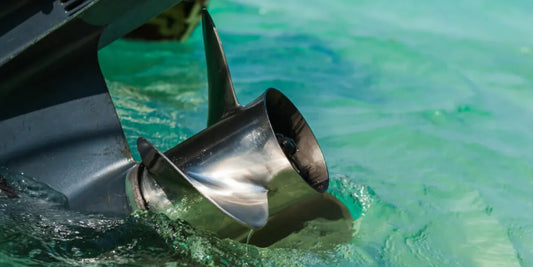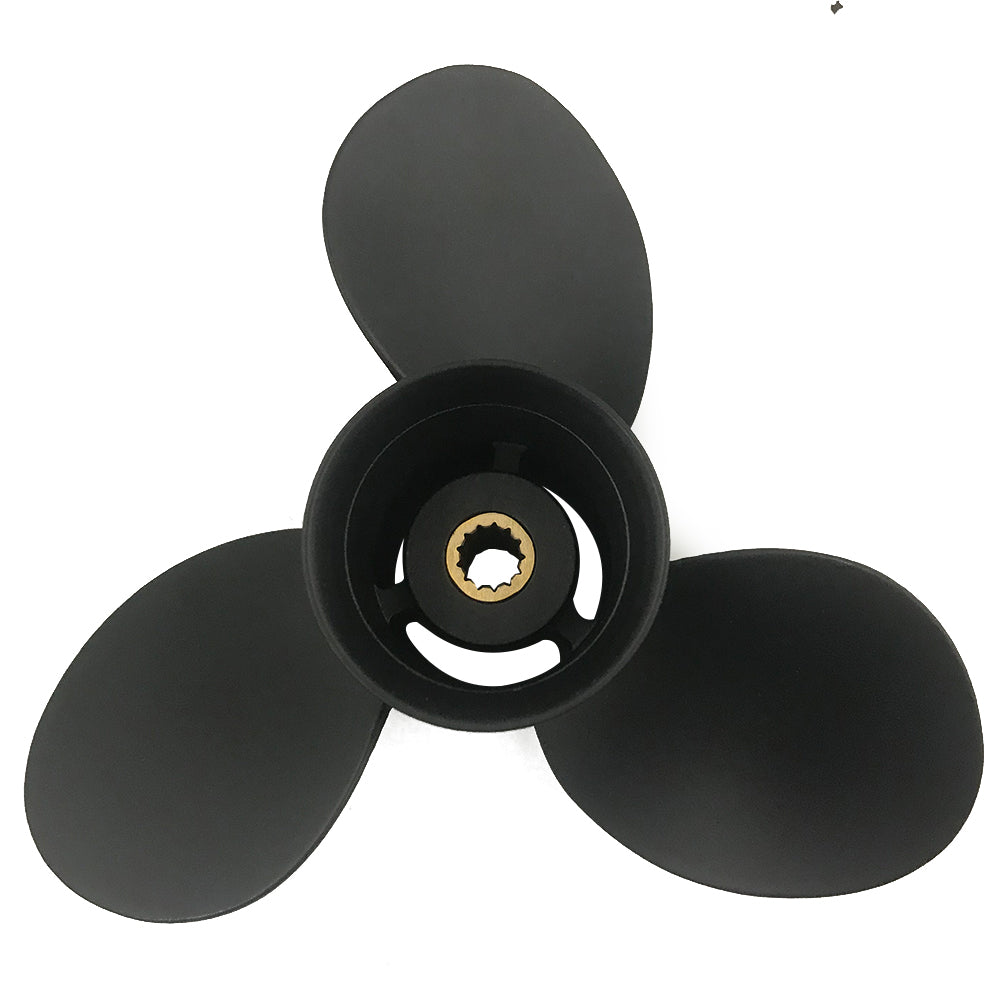Selecting a boat propeller may seem overwhelming, but it is critical to your vessel’s performance, fuel efficiency, and smooth operation in the water. Picking the correct prop goes beyond just the size and material; it involves carefully balancing your boat’s specifications, engine power, and recreational activities. Whether your goal is speed, high fuel efficiency, or towing watersports enthusiasts, the right prop can significantly enhance your experience. This guide will simplify the process by offering expert advice and practical tips to help you determine the best propeller for your situation. Prepare to take advantage of everything your boat has to offer!
How Do I Choose the Right Propeller for My Boat?

What Factors Should I Consider When Selecting a Prop?
Choosing the correct propeller for your boat requires considering various factors to optimize performance. To begin, focus on the boat's primary use. Do you intend to use it for speed, fuel efficiency, or towing? A lower-pitched propeller is recommended for speed, whereas a higher-pitched propeller will achieve cruising and maximize fuel economy.
Also, consider the boat's engine RPM range, as it is essential to ensure the prop is set correctly for the boat manufacturer's specifications. Operating within this range will help avoid excess maintenance and efficiency loss. In addition, material plays a critical role. Aluminum props are lightweight and inexpensive, but they do not perform as well as stainless steel props, which are better suited for high-performance or rough-water boating.
Another critical consideration is diameter and pitch. Diameter, which refers to the overall size of the propeller, influences the amount of water displaced. In contrast, pitch refers to the distance a prop moves through the water with each rotation. It is crucial to achieve the desired combination of speed and power.
Lastly, consider the number of blades. Commonly used three-blade propellers strike a nice balance between thrust and speed; however, four-blade options offer smoother rides, better handling during heavy loads, and improved acceleration during water sports. Careful analysis of these factors will help make an informed decision that enhances your boating experience.
How Does Pitch Affect My Boat Performance?
Pitch is one of the most critical factors influencing your boat's overall performance. It is a vital factor measured in inches; it describes the theoretical distance a propeller advances through the water in one complete turn. Propellers with higher pitch allow for faster speeds but require more engine power to activate. On the other hand, propellers with lower pitch offer better handling and quicker acceleration but reduced top speed.
For most boats, finding the proper pitch balances acceleration and speed. For example, if an engine struggles to reach the RPM range, which is ideal for most engines and specified in the owner's manual, then a propeller with a lower pitch may be beneficial. Industry data suggests that operating at the ideal RPM range improves fuel efficiency while minimizing strain on the engine, cutting down on maintenance costs in the long run.
Moreover, picking the wrong pitch can lead to underperformance. Take, for instance, a propeller where the pitch is either too high or too low. The engine may struggle to meet its target RPM or, in the case of over-revving, burn excessive fuel. Achieving the right pitch on your configuration will lead to improved fuel economy, smoother functionality, and lower chances of undue wear on your boat's mechanical systems. Work with a professional and consult the guidelines to determine what pitch best fits your requirements and the conditions in which you'll be boating.
What is the Importance of the Diameter in a Boat Propeller?
The most relevant aspect of a propeller's diameter is its usefulness. The diameter comprises the distance across the circle formed by the rotating propeller. Carrying large loads will require considerable thrust, which is why wider diameters work best for slower-moving fishing vessels and cruisers. Speed-oriented boats, whether they're for racing or leisure, rely on pulling power and respond better to smaller diameters.
Proper diameter selection ensures the engine operates within its optimal RPM (revolutions per minute) range, enhancing fuel efficiency and performance. Moreover, appropriate pairing of the boat’s diameter with its engine and intended use mitigates the risks of engine overload or underperformance, thus avoiding expensive repairs or damage over time. To achieve the best results, a vessel’s engine power, size, weight, operating water conditions, and typical usage scenarios need to be analyzed to find the most suitable propeller diameter.
What is the Difference Between Aluminum and Stainless Steel Boat Propellers?

When Should I Use an Aluminum Prop?
An aluminum propeller gives you a lot of bang for the buck without breaking the bank. The lightweight design and lower price tag suit smaller or mid-sized boats with moderate horsepower. Whether youre poking along a calm lake or sneaking through shallow backwaters, these props keep things simple. They bend just enough on impact so you dont end up with a bent driveshaft.
You'll find aluminum blades in nearly any size or pitch, so matching one to your rig is rarely a problem. Freshwater weekenders will appreciate that the economy prop runs fine for casual excursions. Push too hard, though-dragging skis, running salt water, or grinding rock bottom-and the edges wear out faster than tougher stainless-steel designs. For everyday fun, though, the aluminum prop remains the everyday hero.
What are the Advantages of Stainless Steel Boat Props?
If you own a boat, you've probably felt that sickening thud when your aluminum prop hits a hidden rock or log. Swap in a stainless-steel prop, and that feeling mostly disappears. The more brutal metal laughs at saltwater, barnacles, and the occasional underwater junkyard; it simply shrugs them off. Yes, the sticker price is higher, but you wind up spending less over the years because you hardly ever need to replace the thing.
Speed demons love these props for another reason: the blades dont bend when you crank the throttle. That extra stiffness keeps the edges where they belong, so fuel burns more evenly, sometimes even saving you a gallon or two every trip. Engineers can then carve the blades with tighter curves and mils, and the result feels like swapping your old truck tires for brand-new racing rubber. In short, stainless steel is for anyone who cares about speed, control, and the peace of mind of knowing their prop won't back down.
How Do I Decide Which Material is Best for My Boat?
Picking the right propeller material isn't just tech talk; it affects how smooth your day on the water will feel. Budget, boating style, and the chop you usually face all weigh in on the final call. A well-worn aluminum wheel often gets the nod from weekend tinkerers who want easy handling without bullying their wallet. The metal is light enough to swap by hand after lunch and manages just fine on the glass-like lakes, the most pleasurable craft cruises. That softness, though, leaves it bent or nicked after a nasty bump on rocks or reefs.
If your weekends tend toward wide-open throttle, stainless steel looks less like a splurge and more like a safety net. The heavier blades shrug off bruises and stay true even when the speedometer pushes into the red. Sure, the initial price feels steep, but keep it long enough, and the math flips—you're spending pennies per mile instead of dollars.
Where you put your boat in the water matters more than you might think. People who usually cruise through lakes and rivers lean toward aluminum because it costs less and does the job. However, Folks chasing waves in saltwater tend to reach for stainless steel since the metal shrugs off rust and corrosion better than anything else. If you stop and picture your routine- the scenery, the weather, and how hard you push the engine- you'll land on the choice that keeps your outings smooth rather than stressful.
How Do I Calculate the Right Pitch for My Boat Propeller?

What Tools Can Help Me Calculate Pitch?
Online calculators make choosing the right propeller pitch simpler. You plug in numbers like boat weight, horsepower, RPM, and the speed you're chasing. Within seconds, the tool spits out a suggested pitch, saving you guesswork. A few marine brands even bundle that same math into handy smartphone apps.
Tachometers still play a starring role. They sit on the dash and let you eyeball engine RPM in real time, answering whether you're where you need to be in the recommended range. A portable GPS does the speed check, serving up a hard number instead of a gut feeling. Mix those figures and you get a clear picture of efficiency, ensuring your boat glides rather than fights through the water.
How Does Pitch Impact RPM and Speed?
Pitch is the distance a propeller would travel in one complete turn without slipping at the blades. Pick a low-pitch wheel, and the engine revs climb quickly; that translates into snappy acceleration, perfect for towing a wakeboarder. Switch to a high-pitch prop, and the revolutions drop because the blades bite harder into the water. That extra bite can push the boat to a higher top speed, although pulling away from a standstill takes longer.
Picking the right propeller pitch is about keeping the engine happy and saving gas money. A too steep pitch can leave the motor gasping below its sweet spot RPM, making you burn more fuel for less fun. Go the other direction with a very low pitch, and the revs might spike beyond safe limits, chewing up parts faster than expected. Match the blades to the boat chores- whether pulling a slalom kid, cruising with family, or pinning the throttle for a record run- and the hull, motor, and manual all seem to high-five.
Yet speed doesn't live in a vacuum. Weight in the bilge, a pricy set of ski lockers, or a rogue wash from an oncoming barge can steal the momentum a tall pitch promises on paper. Messy load balance or a head current dragging at the stern? That flagpole-style prop may drop the RPM instead of lifting it. Testing several props within the handbook RPM lets you see which spin truly marries pitch, speed, and rev in the real world, the one where bragging rights matter most.
Can a Pitch Prop Calculator Simplify My Decision?
A good pitch prop calculator is like having a friendly expert ready to help you pick a propeller—type in your engine horsepower, gear ratio, boat weight, and desired speed. Almost in the blink of an eye, the calculator spits out the right pitch and diameter for a prop that keeps your motor happy. Easing the guessing game out of the process usually means better fuel economy, sharper pulls, and speeds that sit comfortably inside your engine's sweet spot.
Trial-and-error shopping sprees with props can hurt your wallet and chew up weekends. The digital tool trades that hassle for numbers that tell the truth. It keeps load changes and messy water conditions front and center, so the advice stays honest no matter the chop. Whether you're towing wakeboarders all morning or chasing fish into the afternoon, the props chosen by the calculator match the job. That slight difference can save your motor from working overtime, let the gear last longer, and keep the good times rolling.
A pitch prop calculator hands boat owners complex numbers they can trust. When those figures meet real-life runs on the water, boaters end up with a blade that fits their hull, motor, and weekend plans. By peeling the mystery off prop-drag math and turning it into step-by-step advice, the tool becomes indispensable for rookies and salt-seasoned skippers.
What is the Role of Rake in Boat Propellers?

How Does Rake Affect Performance and Handling?
Rake affects both the propulsion system and a boat's handling by impacting the propeller's lift and thrust. Rake is defined as the angle with which the propeller blades are tilted backward with respect to the hub. An increased rake angle will produce more bow lift, which is advantageous for speed and efficient operation of the vessel, especially for performance boats or ships that are intended to plane on the water. In contrast, lower angles of rake are better for heavier boats that need stable handling and increased traction in water.
Rake angle also impacts the ability of the propeller to deal with cavitation. Higher rake designs mitigate ventilation risk at higher speeds by better maintaining water flow. On the other hand, excessively high rake compromises engine strain and overall efficiency if disproportionate to the boat's design. For optimal performance and control, balancing the propeller's rake with the vessel’s weight, hull shape, configuration, and purpose is crucial to gain maximum benefits.
What Types of Rakes are Available for Different Applications?
Propeller rakes are classified into three distinct types: low rake, moderate rake, and high rake. Each type serves a different purpose and needs of the vessel.
Low Rake: This category of propellers is designed with a low rake angle of less than 10 degrees. It is suitable for displacement and heavy-duty vessels such as tugboats, trawlers, and cargo ships. These rakes enhance the ability to thrust and improve the propulsion needed to move heavy loads with control and stability. Moreover, low rake designs are beneficial for slower speed operations, supporting efficient functioning while offering strong propulsion without straining the engine.
Moderate Rake: Propellers with an angle between 10 and 20 degrees are categorized as moderate rake. These are more appropriate for semi-planing hulls and multi-purpose boats, making them more versatile. This design achieves a proper balance between lift and thrust, which is beneficial for speed and power-demanding applications. Moderate rake propellers are good for recreational boating, fishing, and transport vessels operating in unpredictable weather.
High Rake: Rake angle above 20 degrees is classified as high rake and is suited for performance-oriented speedboats, racing crafts, and high-performance offshore vessels. These propellers are designed to provide substantial lift at the stern while maintaining consistent water flow to minimize the chances of ventilation during aggressive maneuvers or at high speeds. They must match the vessel’s design for best efficiency without straining the engines.
Choosing the correct type of rake for a vessel is crucial to attaining optimal performance, fuel consumption, and durability. Each type of rake has advantages tailored to the vessel's operational needs.
How Can I Match Rake to My Boat's Needs?
To determine the appropriate rake for your vessel, analyze its type and primary purpose. For example, high-performance speedboats often need a rake angle optimized for speed and agility. At the same time, fishing boats and work vessels benefit from an angle designed for better load handling and efficiency at lower speeds. Think about the kind of waters you will operate in; boats designed for rough or coastal waters will likely require a rake that prioritizes stability and drag reduction.
For optimal performance, consider the engine power and other key benchmarks like fuel economy and maximum speed. Rakes tailored for larger or more powerful engines typically provide better thrust alignment with propulsion. Also, check with your boat manufacturer for model-specific configuration recommendations. This supports balanced operation while avoiding overburdening the engine or propeller system. Considering these elements and your boating requirements will guide you in choosing a rake setup that optimally improves performance while enhancing durability.
What are the Best Practices for Replacing a Prop?

When Should I Consider a Replacement for a Prop?
Some distinct signs can guide a decision when replacing a prop. The first one is observable damage, like cracks, scratches, or even bent and out-of-alignment blades. Minor imperfections add up, leading to vibrations, increased fuel burn, and even slower speeds. If I see these on my routine check, I know a preemptive replacement would be necessary to avoid engine damage or drivetrain issues.
Another aspect I consider is how the boat performs. If I am having sluggish acceleration, trouble at a steady cruising speed, or a lower top-end speed, the prop could be the reason. The boat's performance can be negatively impacted by general wear and tear over time, improper sizing of parts, or being designed too small. At this stage, replacing the prop could restore optimal performance and improve the boating experience.
Lastly, I consider whether my boating needs have changed. For example, if my boat usage has changed from casual cruising to a more active role, such as watersports, I may need a different material or pitch prop. By watching for these signs and staying aware of my shifting needs, I can make educated decisions about replacing my prop and not do it too early or too late.
How Do I Choose a Replacement Prop for My Engine?
To choose a prop that best fits my engine, the very first thing that I do is check the size and specs that go with my boat and motor. Diameter and pitch are two key factors that will influence performance. Diameter is the circle width of the propeller's circle, and pitch is how far the propeller moves forward in water for one complete turn. My boat's owner's manual provides helpful information on the optimal size and pitch range that engine manufacturers offer.
Considering my boating performance goals, I look at other activities too. Like, if I’d like to enhance my boat’s top-end speed, there may be a chance I might go for the higher pitch propeller. But if I want better acceleration with water sports or heavier towing, I would pick a lower pitch propeller instead. The number of blades is also essential, as three blades can offer better speed and efficiency, but four blades provide smoother performance at lower speeds. All these considerations are crucial in ensuring that the replacement prop I choose goes well with my engine and how I intend to use my boat.
The propeller’s material also matters. I believe that stainless steel props perform better under more demanding conditions. For me, aluminum props work best when used in general, as they are affordable and versatile. However, I tend to reach for stainless steel in a challenging scenario to improve overall performance. Aluminum could work wonders if cost-effectiveness and occasional use are your primary focus. However, if improvement during acceleration or fuel economy is needed, stainless steel becomes a better option.
What are the Signs That Indicate I Need a New Boat Prop?
If you’re like me, the very first sign that your boat is off in some way is when the engine quits responding to the throttle, or you notice that it’s sluggish and adjusting to the demand of the engine, sounds like it is in a struggle to maintain speed. This is, of course, if your engine is working correctly. One of the alarming issues is an increase in fuel consumption without performance improvement. All these factors put together might indicate that you are dealing with a prop that is either faulty or not correctly matched with the engine.
Another noticeable indicator of a worn prop is any physical damage, such as chips, cracks, blade wear, and even, at times, bending. This type of damage indicates that the prop will not be able to do its work correctly. On some days, I notice rather odd sounds or vibrations, indicating a prop working unconventionally. These odd vibrations do not simply affect the overall comfort of the ride but rather the long-term inner workings, such as the engine and drivetrain.
Lastly, if I’ve recently changed how I use my boat, such as upgrading to a new engine or changing the load or usage patterns, I might need a new prop to fit the changes better. Selecting the proper propeller will guarantee that my boat functions optimally, works as expected, and delivers on the experience I seek on the water. Regular check-ups and noticing the signs allow me to fix problems early and maintain my boat in its best shape.
Reference Sources
-
Mercury Marine - Prop Selector
A tool to help you find the best propellers for various marine engines. -
Go2Marine - Boat Propeller Fit Guide
A detailed guide on selecting the right propeller based on pitch and other factors. -
Propeller Depot - Boat Propeller Selector Guide
A step-by-step guide to finding the correct propeller for your boat and engine type. -
Mercury Marine - Selecting the Best Prop
Insights and tools for choosing the best propeller for optimal performance. -
The Hull Truth - Choosing the Correct Prop
A forum discussion on methods and considerations for selecting the right propeller.
Frequently Asked Questions (FAQs)
Q: What factors should I consider for my outboard motor prop?
A: When determining the right prop for your outboard motor, consider the engine’s horsepower (hp), the style of your boat (like a pontoon or runabout), and your performance goals. If you wish, you can check the manufacturer’s specs or consult a prop shop to ensure that the current propeller correctly matches your engine and see if a prop that aligns with your specifications can be made.
Q: Why is it important to have the right part number when purchasing a new prop?
A: The part number allows you to search for the exact details of the propeller and its components. This significantly improves the process of identifying the best props for your outboard and ensures that they will work with your motor.
Q: Is it better to have an outboard with a 3-blade or a 4-blade prop?
A: Choosing between a 3-blade or 4-blade propeller solely depends on individual motorists. The common understanding is that 3-blade props tend to give higher speed and efficiency compared to 4-blade props, which provide better low-end torque and great handling, particularly when towing or at low speed. Think about how you will use your boat to make the most educated choice.
Q: How does pitch affect the performance of my outboard?
A: The outboard motor’s propeller pitch affects the torque or thrust produced, determining practical work per minute. For instance, a smaller pitch allows for faster acceleration and higher RPMs, while a larger pitch assists in achieving higher speeds. Therefore, matching the current propeller's pitch is essential to optimize fuel consumption and boat performance.
Q: What is the ideal diameter for my outboard prop?
A: The ideal outboard propeller diameter depends on your boat's engine horsepower and the type of vessel you own. In most cases, wider diameters improve thrust but must be balanced with pitch so that the motor can achieve max RPMs. Always refer to your motor’s specifications for the best dimensions.
Q: How can I ensure my new prop will match my current outboard motor?
A: To ensure proper matching with your outboard motor, refer to the manufacturer's guidelines for recommended props based on the motor's horsepower and usage. Also, check your propeller’s data, including part number, pitch, diameter, and others, to see if it matches your engine specifications.
What is the performance effect of the shape of a prop’s blade?
The shape of a prop’s blade, whether three-bladed or four-bladed, affects performance in the prop's interaction with water. A four-blade prop usually offers better lift and more stability at lower speeds, while a three-blade prop may be better at higher speeds. Assess your boating style to select a suitable blade shape.
How can I tell if my prop is responsible for performance problems?
If you have problems like reduced speed, poor fuel economy, or inability to get full throttle, your prop may not be suited to your setup. Look at things like torque and rpm range, and talk to a prop shop to evaluate and resolve any issues diagnosed.
Are there potential options for changing the prop to increase speed?
The answer to this question is yes. If the change is not aligned with the motor’s specifications, it can increase speed. Changing the pitch and diameter of the prop can enhance acceleration and top speed, so it would be a good idea to try different combinations.
Q: What should I consider when dealing with a performance issue with my outboard motor?
A: When dealing with a performance issue, always look into the current propeller's pitch, diameter, and blade configuration. Other factors such as the engine’s horsepower, the boat's weight, and the fuel used should also be examined. Many of these parts can be tweaked to enhance performance.


